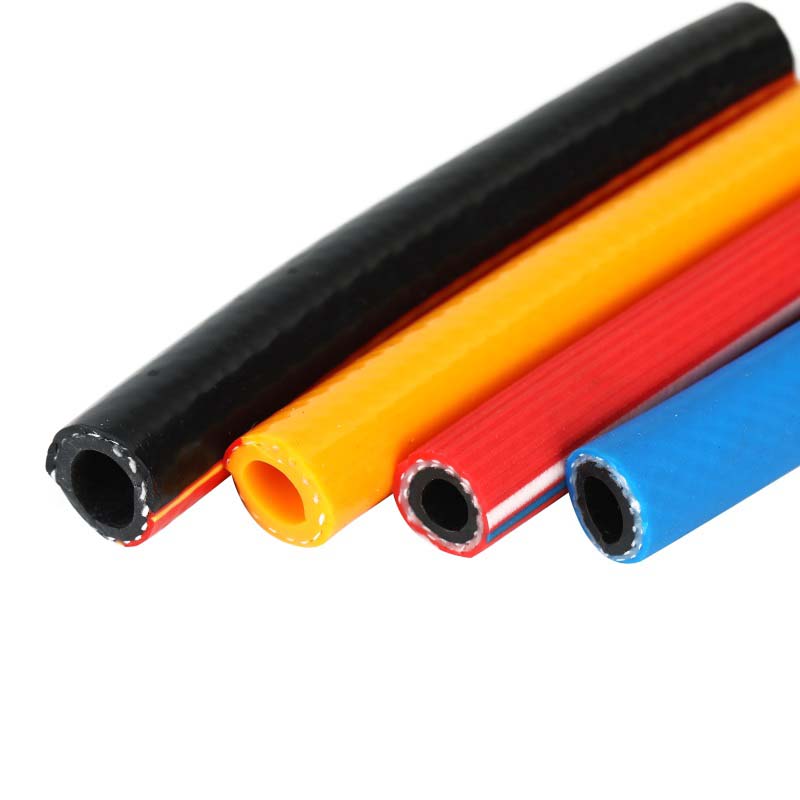pvc air hose vs rubber
Comparing PVC Air Hoses to Rubber Air Hoses Which is Right for You?
When it comes to air hoses, two popular materials dominate the market PVC (polyvinyl chloride) and rubber. Each has its advantages and disadvantages, making them suitable for different applications. This article explores the key differences between PVC and rubber air hoses, helping you determine the best choice for your needs.
Material Composition
PVC air hoses are made from synthetic plastic that offers flexibility and resistance to various chemicals. On the other hand, rubber air hoses are made from natural or synthetic rubber, providing excellent durability and elasticity. The choice between these materials can significantly affect the performance of the hose in specific environments.
Flexibility and Weight
One of the most significant advantages of PVC air hoses is their lightweight nature. They are relatively easy to handle and transport, making them ideal for casual users or those who require mobility. However, PVC hoses can become stiff in colder temperatures, which might hinder their usability in cooler climates.
Rubber air hoses, while heavier and bulkier, offer superior flexibility and performance in a broader range of temperatures. They maintain their flexibility even in colder conditions, making them preferable for outdoor use in variable climates. This durability can be crucial for industrial settings where workers need to move around frequently.
Durability and Compression Resistance
When it comes to durability, rubber hoses typically outperform PVC hoses. Rubber is more resistant to abrasion, tears, and punctures, giving it a longer lifespan under tough conditions. PVC hoses, while generally durable, are more susceptible to wear and damage over time, especially when subjected to rough handling or abrasive surfaces.
Another benefit of rubber hoses is their excellent compression resistance. They can withstand higher pressures without collapsing, making them suitable for heavy-duty applications where high-pressure air delivery is required. PVC hoses may struggle under similar conditions, which can lead to kinking or bursting.
pvc air hose vs rubber

Temperature Resistance
One of the critical factors to consider is temperature resistance. Rubber air hoses can generally withstand higher temperatures, making them suitable for applications involving hot air or steam. PVC hoses, on the other hand, may become brittle when exposed to extreme heat, limiting their usability in higher-temperature environments.
Conversely, rubber hoses can also handle low temperatures better than PVC hoses. This means if you frequently work in cold conditions, rubber hoses are likely the better choice.
Cost Considerations
Typically, PVC hoses are more affordable than rubber hoses. For those on a budget or using hoses in less demanding applications, PVC can be an economically viable option. However, investing in rubber hoses can lead to savings in the long run due to their increased durability and lifespan. This makes them ideal for professional or heavy-duty use, where reliability is crucial.
Application Suitability
Ultimately, choosing between PVC and rubber air hoses depends on your intended use. For light-duty tasks around the home or in a small workshop, PVC hoses may suffice due to their cost-effectiveness and lightweight design. However, for heavier industrial applications, using rubber hoses can enhance safety and reliability. Their durability and ability to handle varying temperatures and pressures are significant advantages in demanding environments.
Conclusion
Both PVC and rubber air hoses have their strengths and weaknesses. If you need a lightweight, budget-friendly option for casual use, PVC hoses may be your best bet. However, if you require a durable, flexible hose that can withstand harsh conditions and varying temperatures, rubber hoses are the way to go. Assess your specific needs, and choose the air hose that will best serve you in the long run.
-
Welded Wire Mesh Panel: Durable, Versatile, and AffordableNewsJul.28,2025
-
Top Quality Oxy Acetylene Hoses for Sale Fit for Welding DemandsNewsJul.28,2025
-
The Future of Pneumatic Air Tubes in IndustryNewsJul.28,2025
-
Superior and Reliable LPG Hose Pipe Solutions for Every NeedNewsJul.28,2025
-
Exceptionally Durable and Versatile Premium Braided PVC TubingNewsJul.28,2025
-
Best Adapters for Connecting Garden Hose to PVC Pipe ConnectionsNewsJul.28,2025














